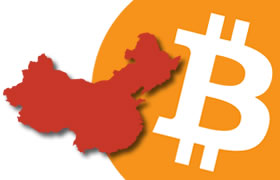Chinese Markets Allow Withdrawals After A Nearly Four Month Moratorium

At the beginning of the year, three major Chinese bitcoin exchange markets decided to put a hold on withdrawals. Traders could still buy and sell BTC but were unable to redeem the currency for cash. This came after the People’s Bank of China (PBoC) decided to look into the anti-money laundering policies and know Your Client systems at these exchanges, to verify their safety and security.
This is due in large part to the high volume of underground financial activity that takes place at bitcoin exchanges. The anonymity of the digital currency is a boon for those who enjoy their privacy, but it is also an extremely handy way for criminals to fund their enterprises. When PBoC officials began conducting on-site inspections, OkCoin, Huobi, and BTCChina all agreed to put a moratorium on bitcoin withdrawals.
The freeze lasted for nearly four months, but recently, all three exchanges feel confident that the upgrades they’ve made to their AML and KYC systems can sufficiently pass muster with any and all PBoC regulations. The freeze ended when OkCoin went back online on May 31st. BTCC and Huobi were only days behind OkCoin.
BTCC officials had this to say when they lifted the hold on withdrawals. “In compliance with anti-money laundering (AML) policies, BTCChina has completed an upgraded know-your-customer (KYC) identity verification system. The new KYC system requires four pieces of identity information, including Full Name, National ID Number, Bank Card Number and Mobile Phone Number.” OkCoin and Huobi enforce nearly identical regulations.
Despite having much stricter guidelines of their own to follow, all three exchanges are going to have to undergo even more upgrades and changes when the PBoC releases their regulations and restrictions. While PBoC did not put the hold on these exchanges, neither were they consulted when the exchanges decided to lift the withdrawal freeze. In fact, sources say that the exchanges came to a consensus amongst themselves, rather than with the PBoC, that their systems were good enough.
Regardless, the People’s Bank has continued to conduct investigations into the security of these exchanges. In addition, they have been conducting studies into bitcoin and it’s viability as a currency. According to the head of the Digital Currency Research Institute at the People’s Bank of China, Yao Qian, “Bitcoin does not fulfill the criteria of a currency.”
So it will be interesting to see what these guidelines are for BTC exchanges. Many believe they’ll follow in the same vein as those that are being released for ICO tokens, another digital currency that is being studied and regulated by the PBoC. These restrictions are expected to be released sometime in June and will include tax plans, further anti-money laundering guidelines, and the plan to implement them.
Before the halt on withdrawals, Chinese exchanges made up a large portion of the global bitcoin marketplace. Just a few days after coming back online, they resumed their place in the global market as the second largest exchange, making up 15% of all bitcoin activity around the world. For context, the only one bigger is the US.
At almost exactly the same time that the Chinese markets surged, Japanese markets took a plunge. This gives merit to the theories that Chinese traders were using Japanese markets to conduct business while the Chinese exchanges were under a freeze. Bitcoin Review thinks it will be interesting to watch how the reemergence of the Chinese exchange market as a major player in the bitcoin universe effects the value and stability of the currency on a global scale.